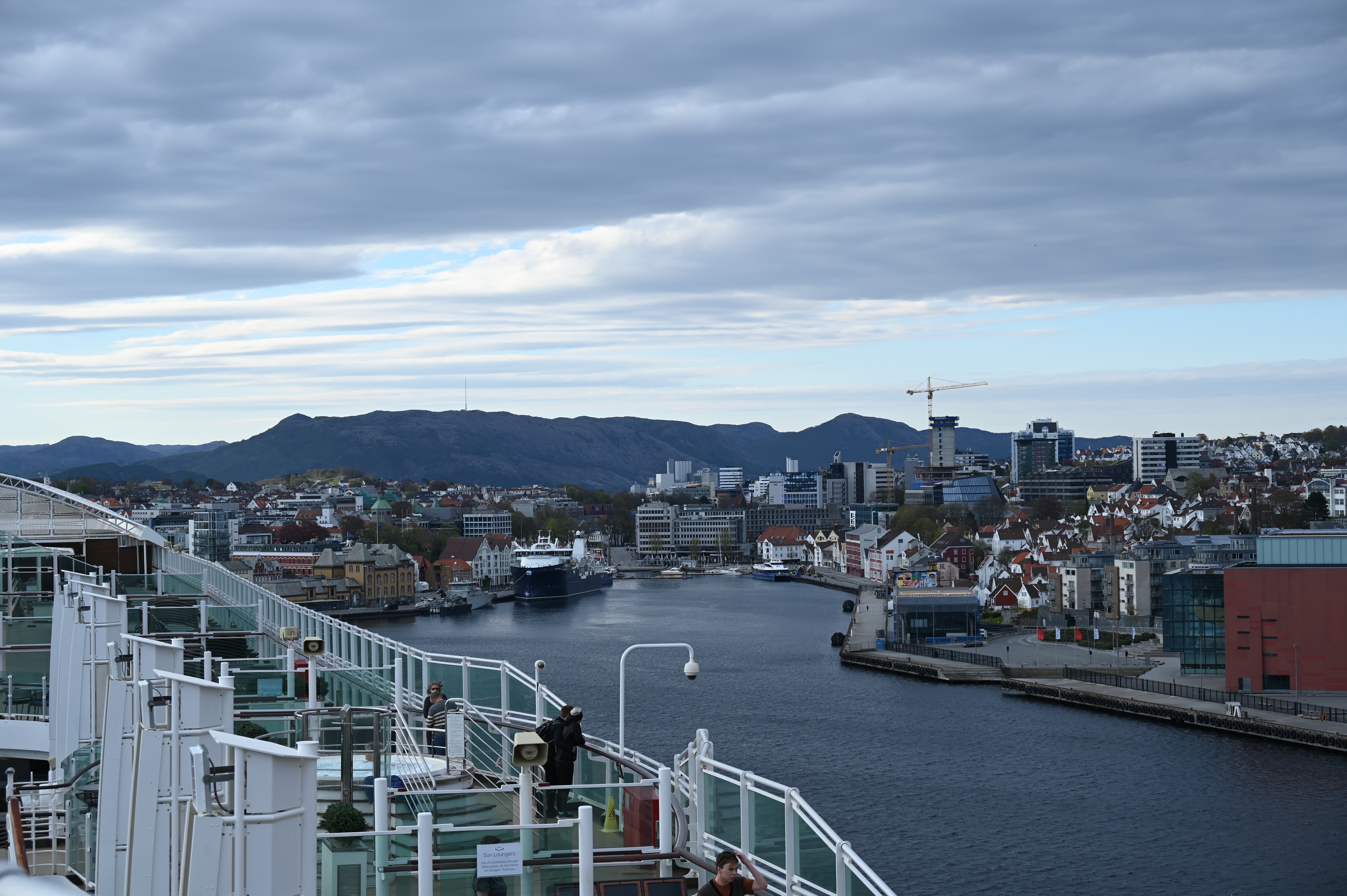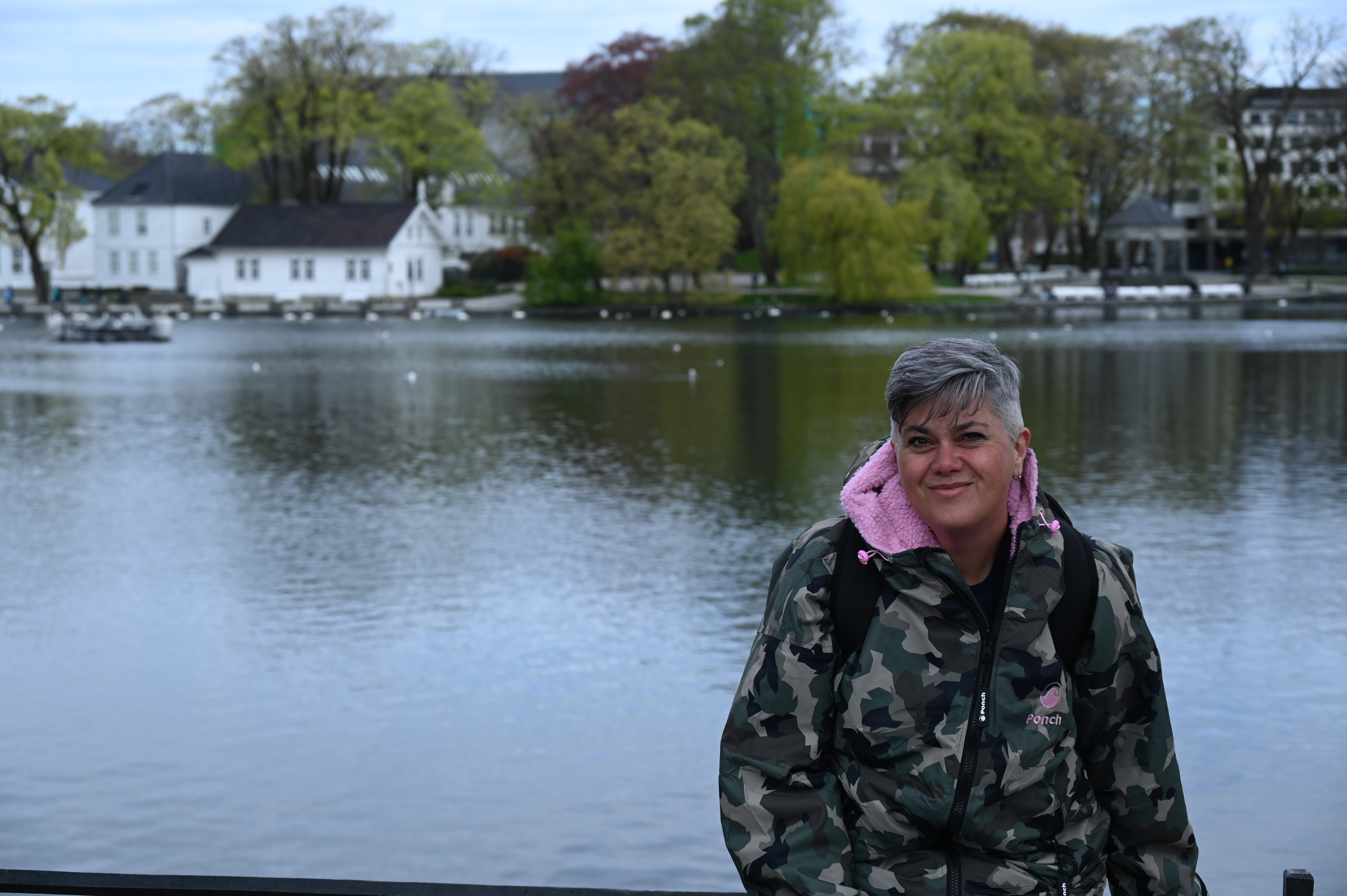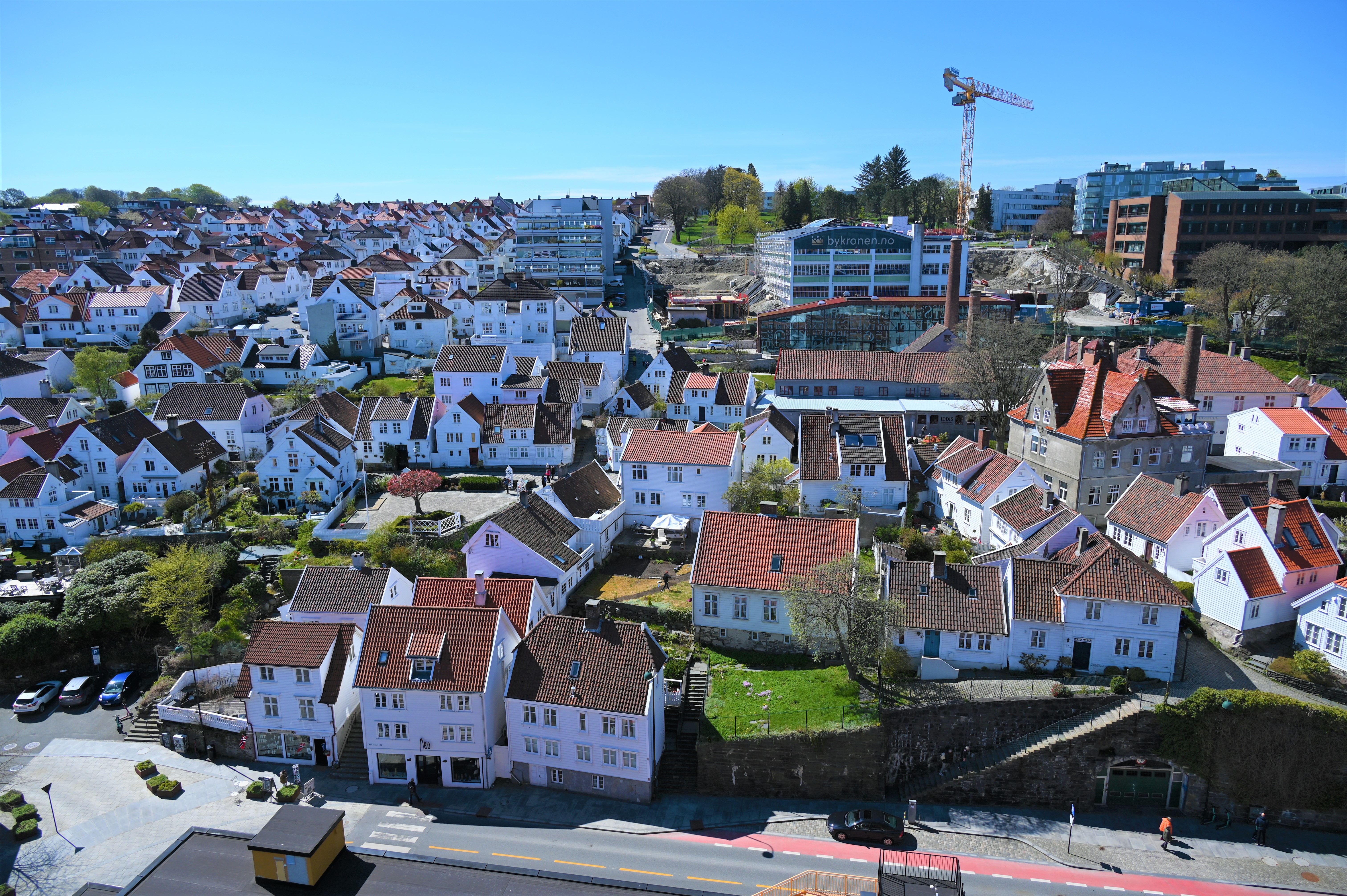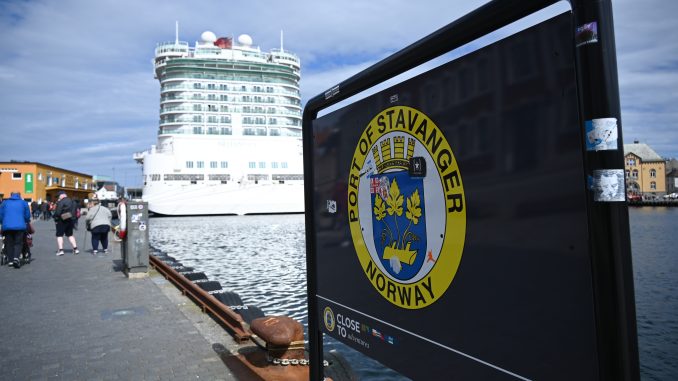
I’m up early to watch us sail into Stavanger. Fourth largest city in Norway. It is the gateway to the Fjords. A bit like Trehafod is the gateway to the Rhondda Valleys.
Located on the Stavanger Peninsula in southwest Norway, Stavanger counts its official founding year as 1125, the year the Stavanger Cathedral was completed. Stavanger’s core is to a large degree 18th- and 19th-century wooden houses that are protected and considered part of the city’s cultural heritage. This has caused the town centre and inner city to retain a small-town character with an unusually high ratio of detached houses and has contributed significantly to spreading the city’s population growth to outlying parts of Greater Stavanger.
The city’s population rapidly grew in the late 20th century due to the oil industry. Stavanger is known today as the Oil Capital of Norway, Norwegian energy company Equinor, the largest company in the Nordic region, has its headquarters in Stavanger. One of the major tourist attractions in the city is the Museum of Petroleum.
Domestic and international military installations are located in Stavanger, including the NATO Joint Warfare Centre. Other international establishments, and especially local branches of foreign oil and gas companies, contribute further to a significant foreign population in the city. The city has a strong international profile with more than 22% of the population having an immigrant background.
It’s an impressive run into the town, with the land quickly rising up to the sky as it swipes left. I spend a contemplative hour taking what I know will be the first of a ridiculous number of photographs this week.
Eventually the ship does a handbrake turn, before effortlessly reversing into the harbour.
Posh and Becks decided to have a lie in and avoid the rush to get off the ship. We decided to head off to spend as much time as possible on shore, but it turns out there was no massive rush.
Many of those that get off the boat disappear on trips arranged by P&O Cruises. We had avoided these because we knew they would be far more expensive than they needed to be – twice the price of booking yourself – and we wanted to see Stavanger. The lack of information from P&O had been a major gripe for me, we couldn’t really book anything because we did not know what time we were landing and sailing, but the fact that Stavanger is the fourth largest city in the country suggested there would be loads to do. One thing my inadequate research had not revealed though, was that Norway likes a kip on a Sunday. Almost everything was shut.
We purchased a ‘hop on hop off’ bus tour, for the princely fee of £30 a head, then headed off looking for coffee. Starbucks was open – international mega corporations are no more inclined to give staff the day off on a Sunday than they are to pay tax. We then went for a quick wander to a lake near the city centre, Breiavatnet, which looked a lot bigger on the map than it did in real life. We took a few photographs then hopped on the hop on bus.
Less than an hour later, we hopped off next to the ship, having done a lap of the entire city and not being motivated to hop off anywhere else.
That’s another of the drawbacks of this sort of holiday, you don’t really get the time to explore properly. It is probably a harsh judgment, but from that very brief first impression, the city is rather underwhelming, to put it politely.
However, not all was lost. We saved the best to last. Right next to where the ship is docked is the ‘old town’.
Gamle Stavanger is the historic area of the city. The area consists largely of restored wooden buildings which were built in the 18th century and at the beginning of the 19th century.
In the aftermath of World War Two, a new city plan was created for Stavanger. It included razing most of the old wooden buildings in the city centre and replacing them with new modern structures in concrete. One single voice spoke up against this plan, and today it is recognized that Gamle Stavanger owes its existence to Einar Hedén (1916-2001), then City Architect of Stavanger. In 1956 the city council voted to conserve part of the old city centre.
It is not like the old towns of Prague, Bruges, or Kraków. For a start, it is nowhere near as old. And everything is wooden, not a brick building in sight – which means they are only two or three stories high. As a result, wherever you are, the good ship Britannia dominates the skyline. And everything is universally painted white. Most of the buildings are privately owned dwellings, so there is nothing particularly interesting about the area, but it is picturesque. An Instagrammer’s dream.
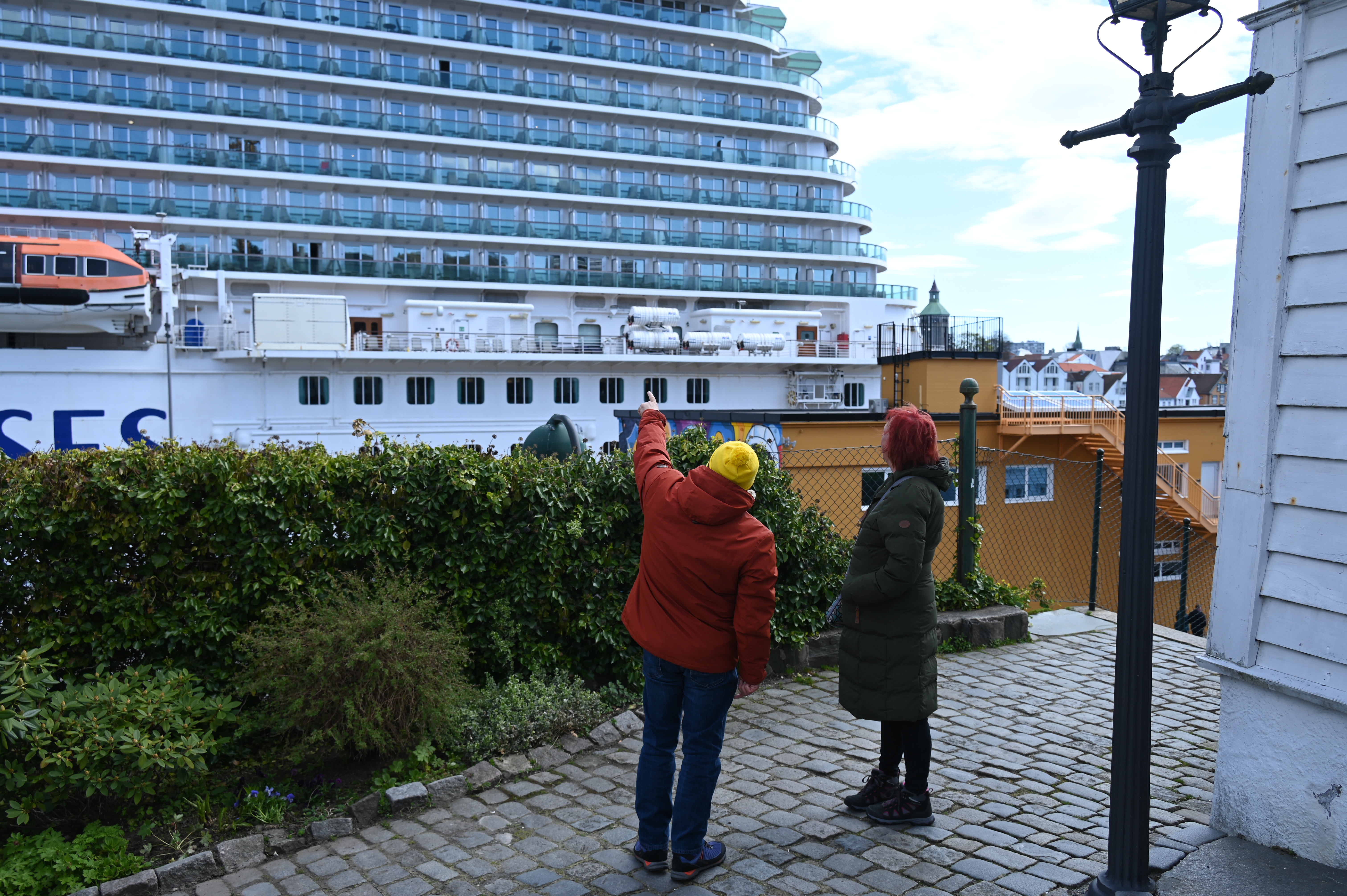
We bump into posh and Becks, who have finally made it off ship, but lose them almost as soon as we find them. After a few minutes looking for them, we accidentally find ourselves sat outside a coffee shop smearing ice-cream all over our faces and watching the world go by.
After exhausting all the different angles from which to take photographs, we head back to the ranch and sit drinking pina-coladas on the smoking deck (the only open-air bar) watching Stavanger fade into the distance.
I take a wander around the deck snapping away taking photographs of the fjord. The view is amazing, but I hear a pool party going on midships, clearly not everyone is interested in the fjords. I bump into a fellow photographer, and we get chatting about the view. We come to the subject of Stavanger, I refer to it as ‘underwhelming’, and she agrees. She then informs me that she had booked on an excursion – a helicopter flight over a nearby glacier. The fee rocked in at £300 for twenty minutes in the air, but she was getting a refund because the weather stopped them flying.
Once again, we eat in the restaurant. Our allocated table is next to a window, so we watch the fjords drift by. It is notable that the sun seems reluctant to go down, we are so far north the days are a lot longer.
We have an early night and start binging on the TV drama Vikings, which is appropriately one of the box sets on offer on the ships in house TV station.
